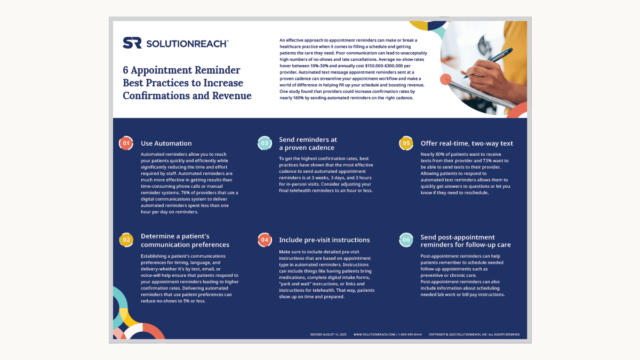A major issue continuing to afflict healthcare practices’ ability to maintain adequate staffing levels is ongoing administrative staff burnout. Along with higher costs, the challenge of employee burnout can impact your practice in multiple ways and must be addressed in order to minimize impacts to your operations. A few facts on burnout include:
- 75% of workers in every industry have experienced burnout
- Nearly 40% of employees are working longer hours since 2020
- It’s well-known that healthcare professionals have the highest rates of burnout when compared to any other job sector
- 91% of employees say unmanaged stress or frustration in the workplace negatively affects their quality of work
For a host of reasons, it’s vital you ensure your admin team stays mentally sharp and gets the support they need to perform at a high level. This helps prevent the types of administrative errors that can disrupt your operations, negatively impact patient safety and health, and lead to a lower return on investment for your practice.
What kinds of problems stem from admin staff members being tired, stressed and burnt out?
Because there are so many moving parts associated with communicating with, scheduling, and delivering care to your patients, there’s an equal number of things that can go wrong. Manual processes and systems combined with employee burnout are a recipe for disaster. Studies show 86% of mistakes made in healthcare are administrative.
That’s why it’s so critical that your admin team has the right processes and tools in place to prevent mistakes that can foul up your operations—and patients’ moods and loyalty. If left unaddressed, these errors can result in patient communication and scheduling failures by which patients don’t get timely check-ups and/or preventive screenings, which delay care and negatively impact patient outcomes.
1. Manual patient communications activities
There’s any number of things that can go wrong when you’re coordinating patient care. You have to be very careful that the right appointment reminder, appointment details, dates and times are communicated to your patients at the right time. Miscommunications or an absence of clear and effective communication—whether a text, email or phone call—creates a chain reaction of problems. Having to correct these issues adds to your staff’s workload and takes their time away from booking appointments and assisting patients.
Solution:
Adopt automated appointment reminders and recall notifications to help ensure visit reminders and recall notifications are sent to the right patient at the right time. These digital patient communications tools help patients adhere to care appointments, treatments, and know when an exam or test is needed. Your messages are effective because the solutions also enable you to match your patients’ individual communication preferences and send multiple messages your patients won’t miss.
Similarly, a batch messaging tool enables practices to reach all patients by age, gender, diagnosis, date of scheduled appointment, or date of last to share important health alerts and updates without having to create individual messages.
2. Manual data entry/reentry errors and typos
It’s estimated as much as 50% of medical errors in primary care stem from administrative data entry errors and typos. Inaccurate or incomplete information on medical intake forms, miscues transcribing patient intake details from paper forms, and filing or documentation errors can all snowball into larger problems. Studies show 80% of medical bills contain errors and that 25% of these gaffes are from typos. More than 50% of insurance claim denials are attributed to administrative entry errors and typos.
Solution:
Automated digital intake forms allow your patients to complete intake and insurance forms prior to the visit. The patient simply receives a text message with a secure link to complete intake online with their smartphone or other device. Digital intake negates the need for your staff to reenter patient information and details where mistakes can easily be introduced. An intake tool can help ensure patient appointment information is accurate, which helps minimize insurance claims denials.
3. Patient data errors, noncompliance, and miscommunications
Your admin team is continually changing, updating, and recording new patient data such as appointment history, future appointments, and financial ledger information stored in your practice management (PM) or electronic health record (EHR) software. If that data was entered manually and contains errors, it means you’re inputting inaccurate, duplicate, or obsolete data into your system. Writing back bad data into your system can interfere with your patient messaging and medical records and create compliance risks and the potential need for risk management. The problem is compounded when that data is synced with your PM or EHR. Patients may receive the wrong information in messages or not receive any messages at all. The end result can be missed appointments or recall visits, upset patients, poorer patient outcomes, and lost revenue for your practice.
Solution:
A modern patient communications platform includes sync features that help ensure patient data and records are accurate and automatically synced 3x per day with your PM/EHR. That way, no matter how many frequent changes you’ve made to patient data, only accurate and up-to-date information will be included in patient messages and records, your schedule, and your collections ledger. It supports better staff performance, minimizes errors, saves time, and ensures your patients get the prompt care they need.
Key Takeaways
Better support your staff and minimize the effects of burnout while improving your practice’s productivity by adopting patient communications tools. Digital solutions help reduce administrative errors which can derail appointments and prevent patients from getting the care they need. Automated patient tools help boost your team’s performance while eliminating many of their manual tasks and workload where there is opportunity for error reduction. Reduce your costs, operate more effectively and efficiently, and boost your revenue with affordable patient communications tools.

To learn more tips on running a more efficient practice to help you increase your appointment volume and revenue, download the guide, “6 Appointment Reminder Best Practices to Increase Confirmations & Revenue.”
Read the Guide


